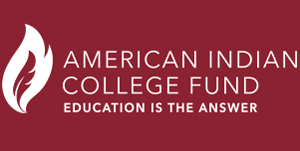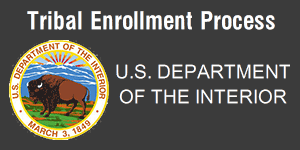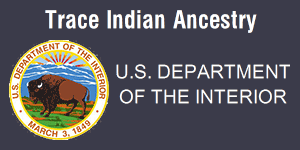First Nations
Principal First Nations of Canada
Woodland First Nations
There were eight principal tribes of Woodland First Nations, all of whom spoke languages belonging to the Algonkian family. The now extinct Beothuk lived in Newfoundland, while the Mi'kmaq occupied Nova Scotia, northeastern New Brunswick, Gaspe in Quebec, and Prince Edward Island. Southwestern New Brunswick and the neighboring part of Quebec were the home of the Malecite.
The Montagnais and Naskapi lived in what is now Quebec and Labrador. The Montagnais occupied the heavily wooded area along the north shore of the St. Lawrence as far east as Sept-Iles. The tundra-like lands of the Naskapi extended far into northeastern Quebec.
The Ojibway occupied a large territory encompassing all the northern shores of Lake Huron and Lake Superior from Georgian Bay to the edge of the Prairies, and to the height of the land north where the rivers begin to flow towards Hudson Bay. The Algonquin lived in the Ottawa Valley. The Odawa lived mainly on Manitoulin Island in the northern Lake Huron, Georgian Bay area.
Flanking the Ojibway on the north and west, the Cree also occupied an immense area. They lived on the southern perimeter of Hudson Bay, as far north as Churchill. Their territory was bounded on the east by Lake Mistassini and extended all the way west to the Prairie frontier.
SE Ontario
There were nine principal Iroquoian tribes. All of them spoke languages belonging to the Iroquoian language family. The Huron lived between Lake Simcoe and Georgian Bay. To the south and west were their allies, the Tobacco Nation (also called the Petun).
Further south still on the Niagara Peninsula lived the Neutral. The villages of the Erie tribe bordered on the southern shoreline of the lake which has their name.
South of Lake Ontario and extending to the upper St. Lawrence River was the land of the Iroquois, a confederacy of five tribes: the Mohawk, the Oneida, the Onondaga, the Cayuga and the Seneca. In 1722 the Iroquois confederacy was joined by a sixth tribe - the Tuscarora.
Plains
There were eight principal tribes of First Nations who inhabited Canada's plains. Of these, the Blackfoot, Blood, Peigan, Gros Ventre and Plains Cree spoke languages belonging to the Algonkian language family. The Assiniboine and Sioux spoke languages belonging to the Siouan family. The Sarcee spoke an Athapaskan language.
The Blackfoot (or Siksika) had territory east of the Rocky Mountains in the high plains where Edmonton and Calgary are now. The Blackfoot, together with the Blood and the Peigan, formed a powerful alliance. The Blood lived to the southwest of the Blackfoot, close to the foothills of the Rockies. The Peigan lived south of the Blood, in the regions now known as Lethbridge and Medicine Hat.
Before 1800, the Gros Ventre lived east of the Peigan. The country of the Plains Cree stretched across the northern fringe of the plains, south of the Churchill River to the eastern edge of Blackfoot territory.
The Assiniboine occupied all the area south of the Plains Cree, from the eastern plains to Blackfoot country. The Sioux (or Dakota) were a large confederacy scattered over the American plains and the Canadian West. Today, several hundred Sioux live on reserves in Manitoba and Saskatchewan. They are the descendants of refugees who came to Canada under the leadership of Sitting Bull after the defeat of the American cavalry at Little Bighorn in 1876.
The Sarcee, who came from the north by way of Lesser Slave Lake, lived along the upper part of the Athabasca River, northwest of the Blackfoot.
Plateau
Six principal tribes occupied the varied plateau area of interior British Columbia.
The Interior Salish was the largest of these tribes and consisted of five groups belonging to the Salishan language family. The Lillooet tribe lived in the Lillooet River Valley. South and west of them was the Thompson First Nation, who occupied the Fraser River Valley from Yale to Lillooet. The most northerly and largest of the groups was the Shuswap, who controlled the Fraser River from Lillooet to Alexandria and east to the Rocky Mountains. The most southerly was the Okanagan, who lived in the Okanagan River Valley. To their east around the Arrow Lakes and the upper Columbia River lived the Lake First Nation.
Until about 1750, the Kootenay tribe lived east of the Rockies on the Prairies. Driven westward over the mountains by the Blackfoot, they came to occupy the southeastern corner of British Columbia. They belonged to the Kootenayan language family.
Occupying the headwaters of the Chilcotin River and the Anahim Lake district were the Chilcotin, a tribe belonging to the Athapaskan language family. To their north were the Carrier, who belonged to the same language family. They lived in the large area comprising the valleys of the upper Fraser, Blackwater, Nechako and Bulkley rivers.
The third tribe of Athapaskan speakers was the Tahltan, who lived north of the Carrier and controlled the lands of the drainage basin of the upper Stikine River. North of the Tahltan, in the valley of the upper Lewes River, lived the Tagish, who belonged to the Tlingit language family.
The Plateau culture area was essentially a great valley between the Rocky Mountains and coastal ranges and featured several different environments. The southernmost part was semi-desert, with cactus, sagebrush and rattlesnakes. The central region's rushing rivers and waterfalls ran thick with salmon in spring. To the north, near the Cascade Range, lay a land abundant in moose, deer and caribou.
Despite the variety of local environments, the tribes of the British Columbia interior all used similar methods for hunting and fishing and for cooking and preserving their food. Their house designs, however, varied from region to region. There were also marked differences in the social organization of the various tribes.
Pacific Coast
There were six principal tribes of Pacific Coast First Nations. The most northerly tribe was the Haida, who occupied the Queen Charlotte Islands. They were the only member of the language family called Haida.
Special note, the Haida Nation has given back the name Queen Charlotte Islands to the crown- thus, the name of their land is now officially called Haida Gwaii.
The Tsimshian, who lived on the mainland coast directly across from the Queen Charlottes, were divided into three groups, all of whom spoke languages belonging to the Tsimshian languagefamily. The Tsimshian lived at the mouth of the Skeena River, the Gitksan lived farther inland along the Skeena, and the Nisga'a at the basin of the Nass River.
The southernmost Pacific Coast tribes were the Nootka and the Coast Salish. Occupying the west coast of Vancouver Island, the Nootka spoke a language belonging to the Wakashan language family. The Coast Salish were found on the eastern coast of Vancouver Island and on the mainland just opposite, from Bute Inlet to the mouth of the Columbia River. They spoke languages belonging to the Salishan language family.
Between the northern and southern tribes were found the Kwakiutl and the Bella Coola. Like the Nootka, the Kwakiutl spoke a language belonging to the Wakashan language family. They lived on the northern end of Vancouver Island and on the nearby mainland. The Bella Coola lived on the banks of the Dean and Bella Coola rivers and on the fjords into which these rivers flowed. They belonged to the Salishan language family.
First Nations of the Mackenzie and Yukon River Basins
Twelve principal tribes lived in the vicinity of the Mackenzie and Yukon River basins. All these tribes spoke languages belonging to the Athapaskan language family.
The Chipewyan ranged from north of the Churchill River all the way west to Great Slave Lake and controlled the largest amount of territory. To the south and west were the Beaver who lived in the basin of the Peace River.
The Slave (or Slaveys) ranged from west of Great Slave Lake as far west as the Mackenzie River. The lake-dotted land from the east end of Great Slave Lake to the eastern shore of Great Bear Lake was the territory of the Yellowknife. To their southwest were the Dogrib who occupied the land between these two great northern lakes.
West and northwest of Great Bear Lake lived the Hare. To their west were the Kutchin who occupied the basins of the Pelly and Porcupine rivers, thus taking up much of what is today the Yukon interior. The Han and the Tutchone occupied what is today the southern Yukon.
South of the Tutchone were the Kaska and the Mountain, who lived in the mountainous country to the west of the Mackenzie River. The most southern of the tribes was the Sekani, who dwelt on the eastern slopes of the Rockies in what is now northern Alberta.
Source: Indian and Northern Affairs Canada
This is not an official version of the materials reproduced, nor as having been made, in affiliation with or with the endorsement of Indian and Northern Affairs Canada




